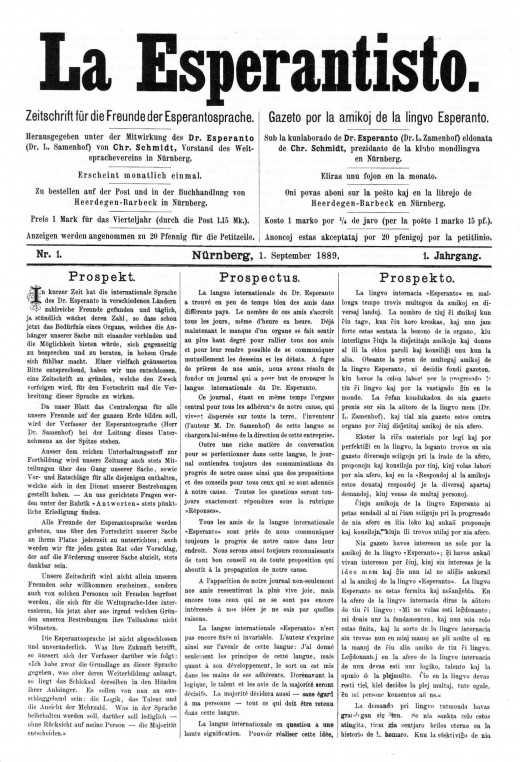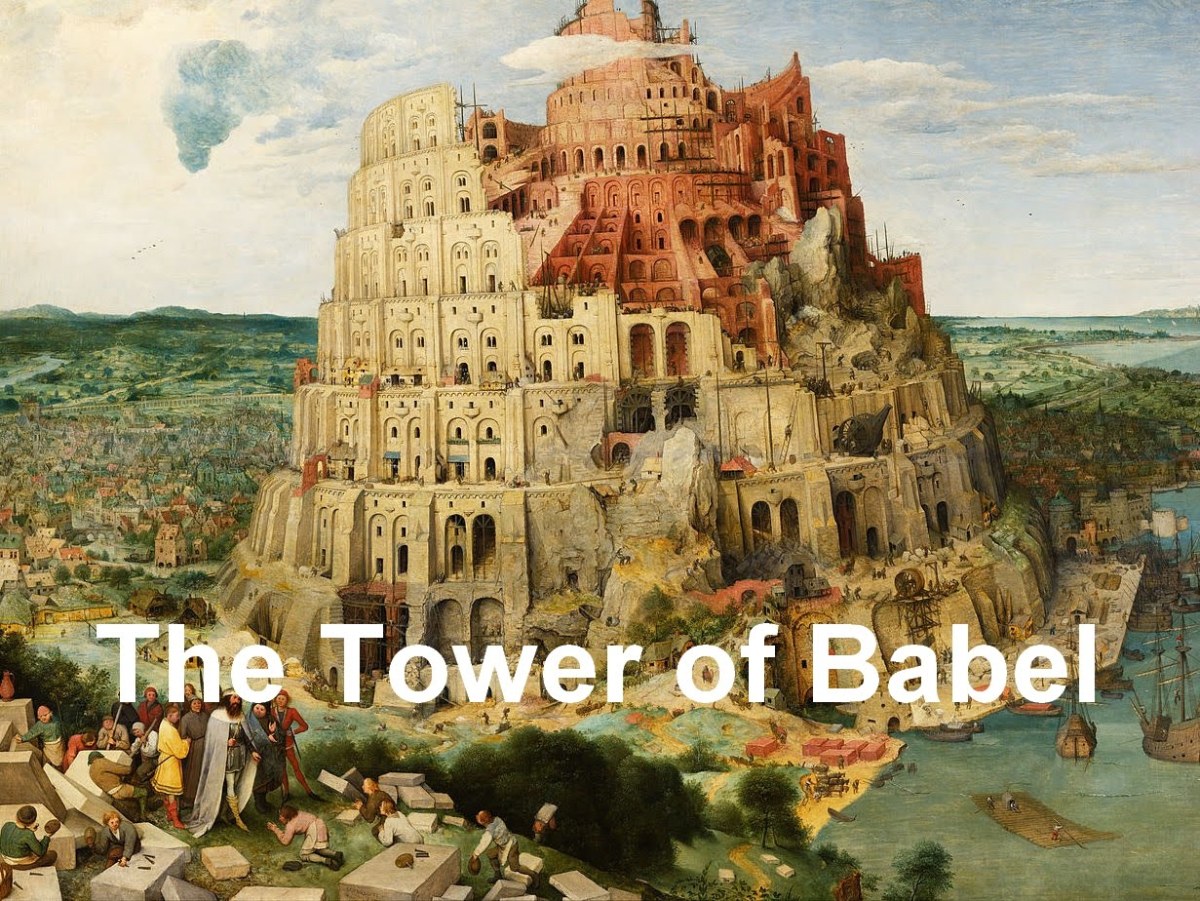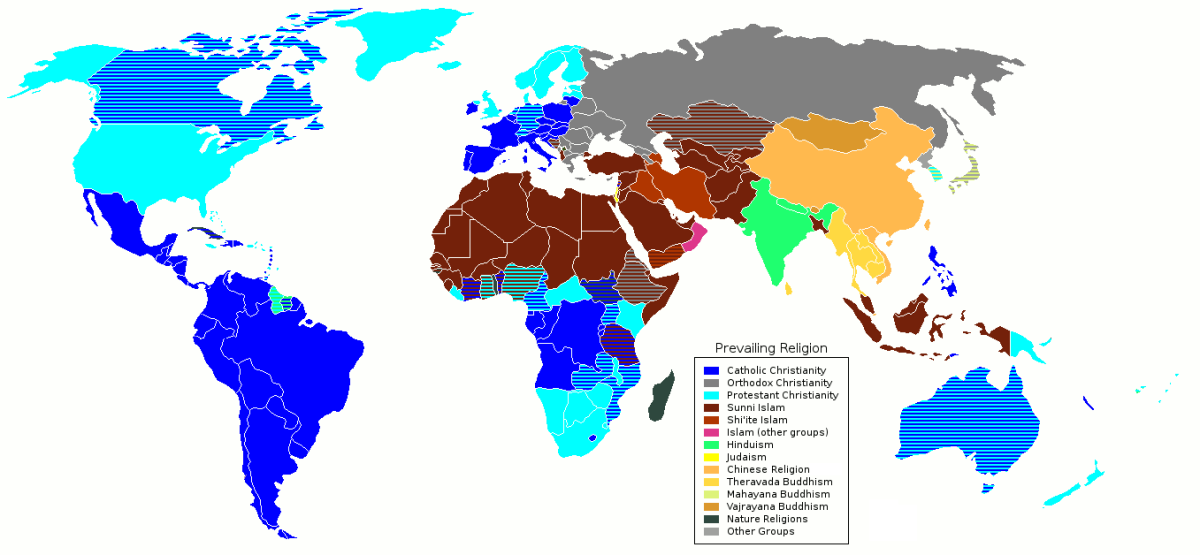Dr Esperanto: The Architect of the Tower of Babel!
Tower of Babel

“Together we stand! Divided we fall!”
The following lines were the only explanation of the origin of Languages for hundreds of years (and even now, for some)!!!
“And the whole earth was of one language and of one speech.
…And they said, Go to, let us build us a city and a tower, whose top may reach unto heaven; and let us make us a name, lest we be scattered abroad upon the face of the whole earth.
But the Lord came down to see the city and the tower which the sons of men had built.
And the Lord said, “Indeed the people are one and they all have one language, and this is what they begin to do; now nothing that they propose to do will be withheld from them.
Come, let Us go down and there confuse their language, that they may not understand one another’s speech.”
So the Lord scattered them abroad from there over the face of all the earth, and they ceased building the city.
Therefore its name is called Babel, because there the Lord confused the language of all the earth; and from there the Lord scattered them abroad over the face of all the earth. “
— Genesis 11:4–9[10]
Some thousands of years later in the Eastern Europe, a Polish oculist, who opened our eyes to a new world, might have been thinking about all the confusion that God had graciously bestowed upon people (according to Torah, for he was a Jew) and decided to unify humanity based on what was once common among them all. What had made them reach for heaven: Language!
But ‘natural’ languages don’t come into being overnight by one person. They evolve out of imitations of nature (onomatopoeia, Yo-heave-ho, and powwow theories) and go through pictogram, logogram, alphabet,… just like the evolution of life on this planet. Along the way, they accumulate literature, heroes, worldviews, and a shared understanding of the world by their speakers. Rules of conduct are negotiated and established in the network of language. That is why pragmalinguistic failures happen when a nonnative speaker talks to you.
Zamenhof couldn’t wait that long, so he decided to make a Frankstein! He took different parts of different languages (Roman, Germanic, and Slovanic languages) he thought could make the learning process easier and preened them. He devised a language with almost no irregularities and very easy to learn to be used as an auxiliary language, a second language! He published the book under the pseudonym “Dr Esperanto” which in Esperanto means “one who hopes”.
“Let there be Hope! And there was Hope!”
One of the most authoritative sources for learning Esperanto (Lernu.net) quotes Zamenhof:
"The internal idea of Esperanto is: the foundation of a neutral language will help break down barriers between peoples and help people get used to the idea that each one of them should see their neighbors only as a human being and a brother."
L.L.Zamenhof, 1912
Language is a semiotic system, which is made up of signs. But “no sign is innocent” (Kress, 1993) and being Neutral is only a myth. In what sense is it neutral then? Maybe gender specifiers? Still most female related words are derived from the male ones: Frato (brother) fratINo (sister). Maybe it is neutral because it doesn’t represent any ethnic groups or specific ideologies. Well, it was mostly used by Jews, Baha’iis, and communists back then. However, nowadays, thanks to the Internet, the trend has changed.
The first Esperanto magazine (1888)

Natural vs Constructed
I have already mentioned the process of naturalization and evolution of languages and how the path most languages taken for thousands of years, Esperanto has been travelling with the speed of light. It no longer, to my humble opinion, can be called artificial as it has interestingly acquired native speakers (hundreds of people) and a lot of scientists and celebrities have learned Esperanto (Jules Verne, Louis Lumiere, Rudolph Carnap).
In terms of literature, music, and films, it is still behind most languages, although it should be noted that a lot of ‘natural’ languages in the world have less than 100 speakers and have no written form at all. Once their speakers die, the language goes extinct.
Esperanto, on the other hand, has an avid community of speakers who are so enthusiastic to help other people learn the language. The idea of Pasporta Servo which was a community of speakers to host Esperantists from around the world indicates how congenial and helpful the speakers are. You could find no more hospitable, kind, and helpful people (based on language not country) than Esperantists.
Final Thought
I have tried to shed a critical light on Esperanto as a language for the world. The idea of Esperanto, however bizarre or idealistic it sounds, has been to help people from different language backgrounds to have a common means of communication. The English language, due to the political and economical effects after WW2, has established its place as a lingua franca and has found itself different varieties such as Indian English, Chinese English, African English,… . Languages used to be imposed on people by colonists just like Spanish in Argentina, or Portuguese in Brazil and Arabic in Egypt. The idea of Esperanto was novel and ingenious at the time as there was no lingua franca as such and the pride and prejudice people took in their own language and nationality prevented them from accepting a language as an international one. Even today we see some European leaders speak their own language at conferences: France and Germany are prime example. Only the recently elected president of France, Emmanuel Macron has been seen to speak English to other politicians.
Languages impose a worldview on their speakers. Through Hollywood,…this medium has changed fashions and trends in clothing, our eating habits (McDonaldization), and even culture. I am not being radical in terms of replacing English with Esperanto in the whole world. But I believe it is worth considering a place in our school curricula. Why should we make the effort and undergo a lot of expenses to begin a new curriculum for Esperanto? Well, it is never too late to start for the sake of simplicity, variety, and humanity.
“let the games begin!”
References
Kress, G. (1993). ‘Against arbitrariness: the social production of the sign’. Discourse & Society, 4(2): 169-191.
https://lernu.net/en/esperanto








